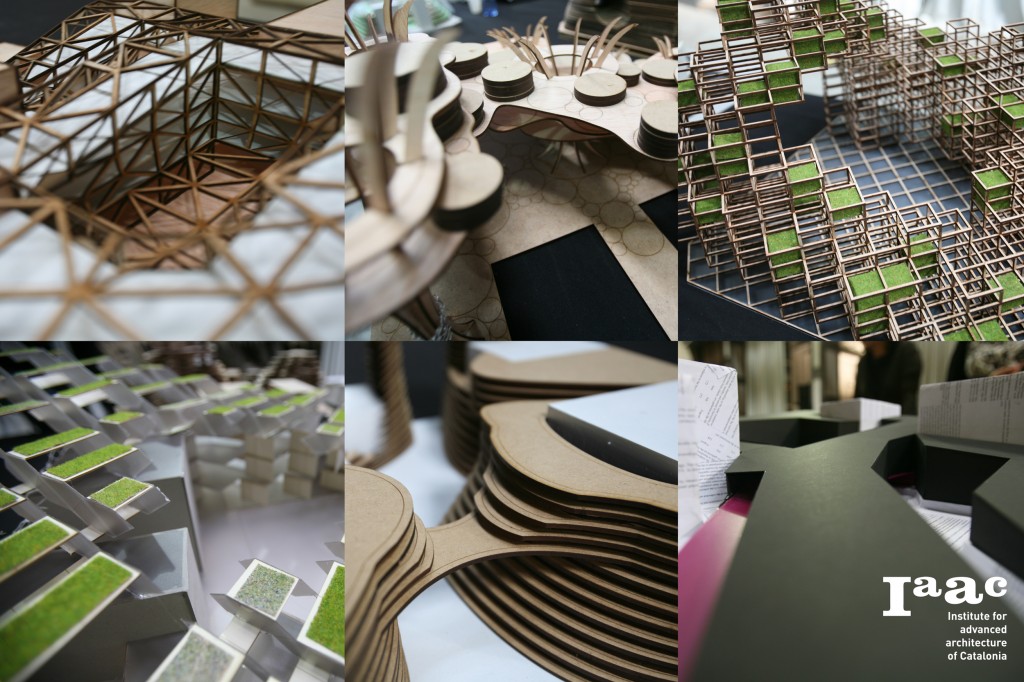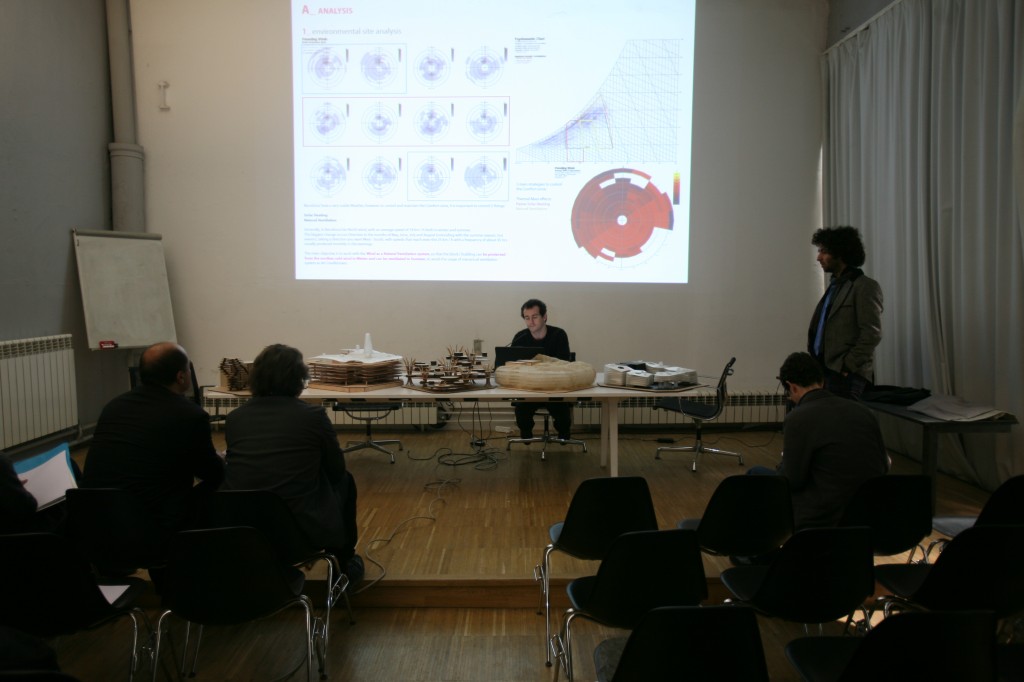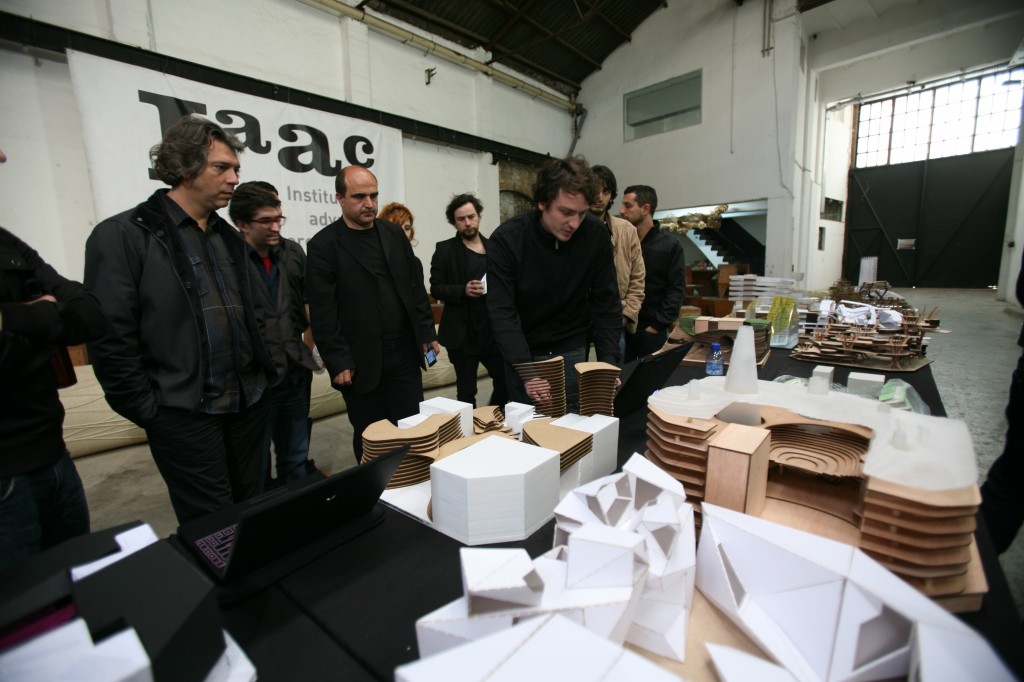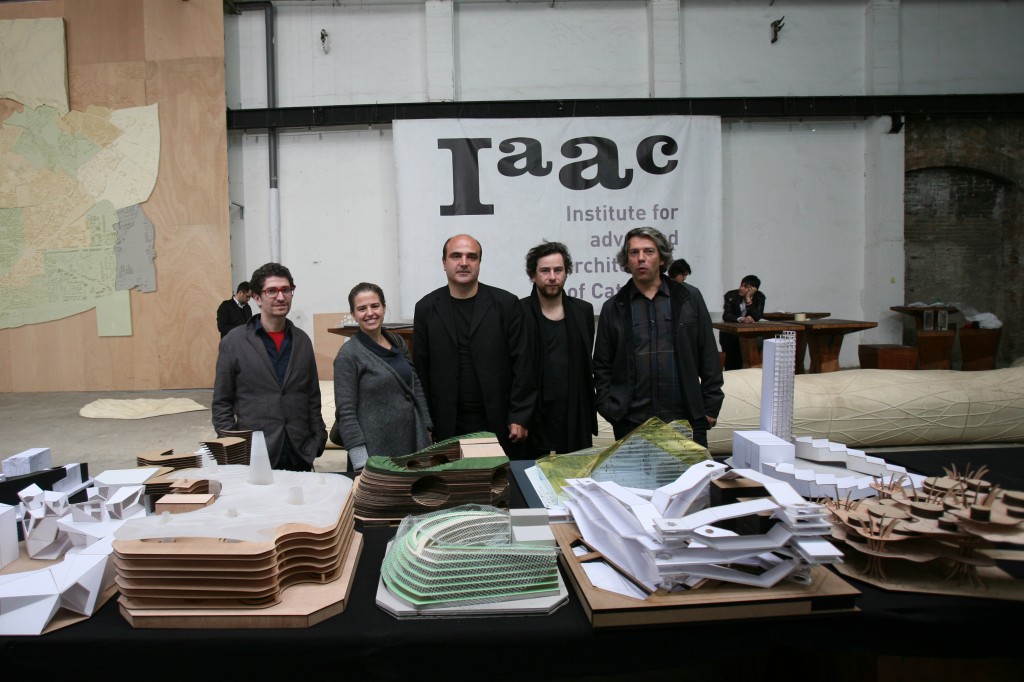
Students of the 2010/2011 Master in Advanced Architecture Self Sufficient Buildings Studio had their final presentations on Wednesday March 30.
In Phase II of the MAA program students attend one of three Research Studios: Self-Sufficient Buildings, Digital Tectonics or Emergent Territories. The final presentations for the Digital Tectonics and Emergent Territories Research Studios were held on separate days.
The project for this Research Studio: Build a Self Sufficient Block for Barcelona.
This studio is run by IAAC Director Vicente Guallart who is assisted by Rodrigo Rubio. For the final presentations, IAAC welcomed a guest jury: Cristina Sendra (Eco Intelligent Growth), Javier Peña (Xpiral Architecture) and Max SanJulian (Volido).




From left to right: Rodrigo Rubio (assistant), Cristina Sendra (guest jury), Vicente Guallart (Director IAAC/Studio Coordinator) Max SanJulian (guest jury) and Javier Peña (guest jury).
About the Self Sufficient Buildings Research Studio:
Architecture goes beyond buildings. A building is a concentration of activities in a particular location which should be responsive to concrete cultural, social, economic and technological conditions. In the 21st century, the buildings are more than machines for dwelling in. They should be living organisms, capable of interacting with their environment, following the principles of ecology or biology rather than those of mere construction.
This being so, the Self- Sufficient Buildings group works on scales that range from the macro-building to the individual home, developing principles and techniques that serve to organize the materialization of programmatic nodes of activity based on natural rules and principles.
The studio devotes special attention to housing and the new forms of social organization of our time, by way of buildings with shared spaces, or macrobuildings that incorporate all the functions of a city. This group is working to introduce innovative techniques such as local energy generation, the development of self-sufficient buildings, the incorporation of hydrogen into the building and the use of new materials, responding to each situation with ad-hoc techniques and principles.
